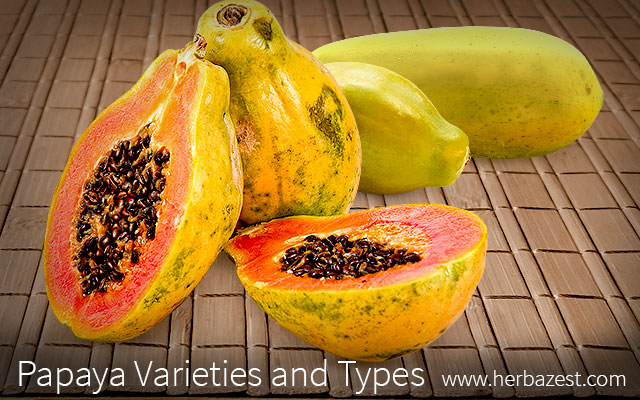Papaya, like most members of the Caricaceae family, is a tall, herbaceous tree-like plant or shrub. It is thought to have originated in tropical regions of the Americas before developing into the complex fruit it is today. In fact, after several centuries of human cultivation, it can be hard to keep up with the many different types of papaya that exist. Through selective breeding mechanisms, papaya varieties differ in their size, color, flavor, quality, and other plant characteristics.
PAPAYA IS A POLYGAMOUS FLOWERING PLANT THAT PRODUCES MALE, FEMALE, AND BISEXUAL PLANT PARTS. THE PAPAYA FRUIT TYPE RANGES FROM SMALL TO LARGE, AND IT CAN BE ROUND, PEAR-LIKE, OR OVAL-SHAPED
Evolution of Papaya
Although papaya origin remain unknown, it was largely disseminated throughout the 16th and 17th centuries to many of the tropical regions of the world. From there, location-specific breeding of different papaya tree varieties took place in isolated events.
In recent times, many selection programs are commercially-minded, intent on achieving papaya types with a favorable crop yield, marketable size, superior taste, and prolonged shelf life. In 1911, a small papaya fruit, known as 'Solo', arrived in Hawaii from Barbados. Prior to this, named papaya varieties and cultivars were virtually non-existent. Yellow-orange in color and superior in quality, 'Solo' is also one of the most commercially-significant types of papaya there is, having been spread throughout much of the papaya-producing region and serving as the basis for several new cultivars.
Papaya Varieties
Most discussions about the different varieties of papaya are centered on their genetic relationships, as they are not separate papaya species.
In the late 1950's, Florida papaya trees were rocked by a devastating wave of plant diseases, and gardeners saw unsatisfactory yields with the Hawaiian 'Solo'. However, vast improvements have been made with the 'Blue Solo'. Developed by the papaya specialist Scott Stambaugh, the orange-fleshed fruit has a succulent flavor and competitive size of two to four pounds (900 - 1,800 g).
The 'Coorg Honey Dew' is a well-known cultivar from India. The plant produces a very high yield of quality, flavorful fruits, making it an excellent competitor in the commercial market. The greenish fruits are oval, weighing four to eight pounds (1.8 - 3.6 kg). Because it stores well, this type of papaya is cultivated for both fresh use and processing.
Meanwhile, 'Eksotika' is the most popular papaya type for export and local consumption in Malaysia. Its red-orange flesh has a high sugar content that makes it favorable for fresh consumption. However, due to its soft texture, the fruit is susceptible to spotting, bruises, and other plant diseases.
Best Types of Papaya
Choosing the best papaya variety has to do with a number of different factors, including plant characteristics and individual preferences. However, the most commercially-successful papaya cultivars are best suited for a wide range of uses. They are sweet, medium-sized, and thick-fleshed with easily-removable seeds.
On the other hand, home gardeners are partial to the early-maturing, low fruit-bearing, and disease-resistant types of papaya, which are more easily grown and harvested. Hybrids derived from the 'Solo' variety still dominate the papaya industry because of the happy marriage between their sweet flavor and their small, handheld size. Moreover, these hybrids produce only female plants, which plays a role in favorable crop yield.
Due to the nature of the fruit's evolution, different varieties of papaya can be witnessed all over the world. With variations in their size, shape, color, and flavor, there are enough papaya types to last a lifetime.
Sources
- International Tropical Fruits Network, Papaya – Common varieties
- National Horticultural Board - India, Papaya | Papaya Varieties
- Papaya the Medicine Tree, pp. 14 - 16
- Purdue University, Papaya, Carica papaya L.
- Texas A&M Agrilife Extension, Fruit & Nut Resources, Papaya
- University of Oxford, Department of plant sciences, e-Monograph of the Caricaceae




